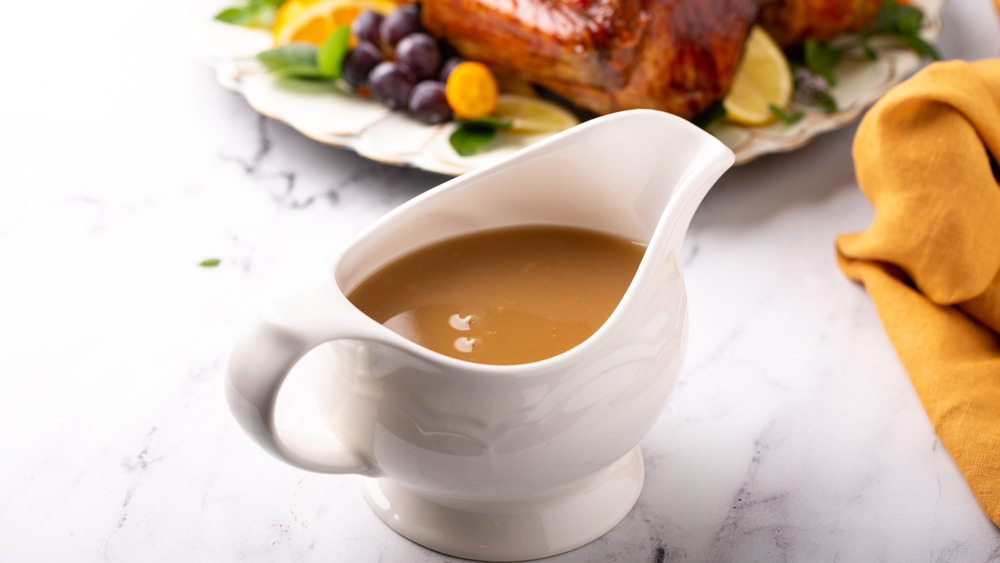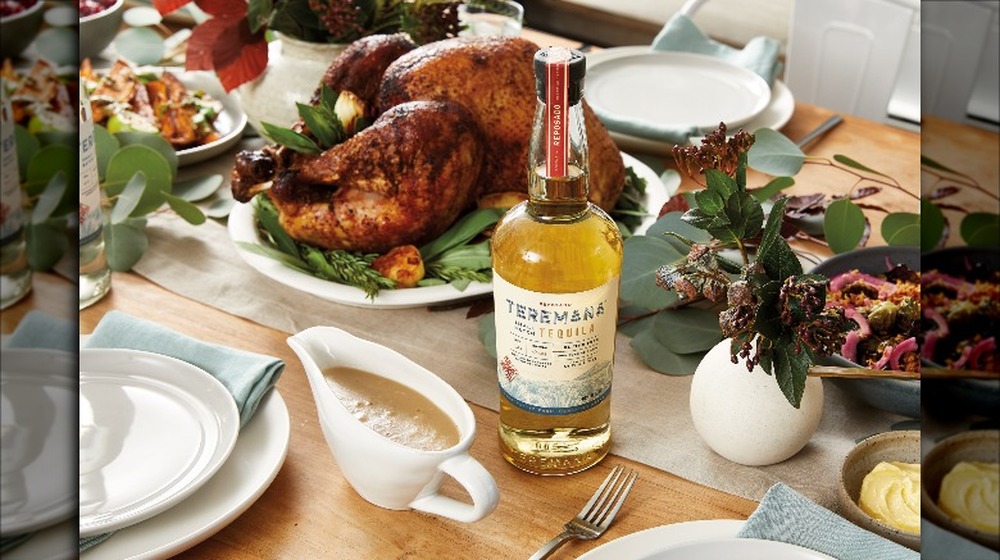The Surprising Secret Ingredient Your Gravy Has Been Missing
Gravy is one of those food items that just feels and tastes like home. According to Encyclopedia.com, the term gravy has become synonymous with the word homemade. And over the years, advertisers have used the term to imply that a commercial product will taste homey. Gravy can come in a myriad of different forms. My Recipes details that there are at minimum 12 different regional types of gravy within the U.S. alone. So, much like regional BBQ, chances are that you grew up with a very specific kind of gravy at your dinner table. And according to a Reddit user, gravy means something completely different if you are from the UK or France.
When it comes to making gravy, the process is fairly straightforward. The Spruce Eats cites that all you need to make a delectable version is meat drippings (from either turkey, pork, chicken, or beef), all-purpose flour, low sodium stock, salt (to taste), and pepper (to taste). With a recipe so simple, it's easy to build upon it and make it even better. This year, if you're feeling like adventurous with your culinary endeavors, when you're mixing up your gravy, try adding a little tequila to it (#scandalous). Teremana Tequila is looking to spice up gravy (and family parties) with the perfectly boozy gravy recipe. All you'd need is 16 ounces of gravy, one ounce of Teremana Tequila, and to whisk it over heat until it's fully combined.
Gravy has a deliciously lengthy history
But before tequila was ever being considered an addition to everyone's favorite Thanksgiving day sauce, Encyclopedia.com reports that the first time the word gravy (then called gravé) appeared was in medieval French cookbooks. In essence, gravy was the collection of natural juices that melted off of the meat that was roasting. Once the cooking was complete, the gravy would then be used as a table sauce that could be added to the meal. The French later on called it jus, according to Encyclopedia.com. Fast forward to 17th century France, and gravy got a facelift. Things like herbs and wine started to be incorporated into it. After this cooking practice reached the U.S. and the UK, both countries began adding flour or roux to the mix, helping the gravy get a much thicker consistency.
But it wasn't until after the American Civil War that gravy exploded in the U.S. (figuratively, of course). Depending on where in America you're looking, you can come across things like chocolate gravy from the Appalachian region, cornmeal gravy down in the Mississippi Delta, redeye ham gravy from the South, tomato gravy from New Orleans, cream gravy from Texas, salt pork and milk gravy from New England, and shrimp gravy from Charleston, South Carolina (via My Recipes). This beloved recipe's lengthy history makes it clear why there are so many tasty variations.

